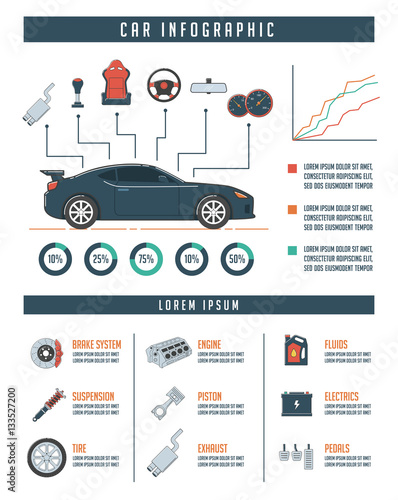Deciphering Your Car'S Warning Indicators: What They Genuinely Represent
Deciphering Your Car'S Warning Indicators: What They Genuinely Represent
Blog Article
Web Content Writer-Boye Gilbert
When you're behind the wheel, those radiant caution lights on your dashboard can be a little bit puzzling. Do you know what they're trying to inform you regarding your car's health? Comprehending the relevance of these lights is important for your safety and security and the long life of your vehicle. So, the next time one of those lights appears, wouldn't you want to decipher its message accurately and take the essential steps to address it?
Common Caution Lights and Interpretations
Determine typical warning lights in your cars and truck and comprehend their meanings to ensure safe driving.
The most regular warning lights consist of the check engine light, which signifies issues with the engine or emissions system. If this light begins, it's important to have your vehicle examined without delay.
The oil stress warning light suggests reduced oil pressure, requiring prompt interest to prevent engine damage.
A flashing battery light may recommend a damaged charging system, potentially leaving you stranded if not dealt with.
just click the next web site monitoring system (TPMS) light signals you to low tire stress, influencing lorry stability and fuel performance. Overlooking this could result in risky driving problems.
The abdominal muscle light shows an issue with the anti-lock braking system, endangering your capacity to quit promptly in emergencies.
Lastly, the coolant temperature cautioning light warns of engine overheating, which can cause serious damages if not dealt with quickly.
Understanding these common warning lights will help you deal with concerns immediately and maintain risk-free driving conditions.
Relevance of Prompt Focus
Understanding the typical caution lights in your automobile is just the primary step; the importance of without delay attending to these warnings can't be stressed sufficient to ensure your safety when driving.
When a warning light illuminates on your dashboard, it's your car's means of interacting a possible issue that requires interest. Overlooking these cautions can bring about extra serious troubles down the road, compromising your safety and security and potentially costing you a lot more in repairs.
visit the up coming website to alerting lights can stop break downs and crashes. For example, a blinking check engine light might show a misfire that, if left neglected, can trigger damages to the catalytic converter. Addressing this promptly can save you from a pricey repair work.
In a similar way, a brake system advising light might signify reduced brake fluid or used brake pads, crucial elements for your safety and security when driving.
DIY Troubleshooting Tips
If you notice a caution light on your control panel, there are a few DIY repairing suggestions you can attempt prior to looking for specialist help.
The very first step is to consult your cars and truck's guidebook to recognize what the details caution light shows. Often the problem can be as basic as a loosened gas cap triggering the check engine light. Tightening up the gas cap might solve the trouble.
Another typical concern is a reduced battery, which can activate various advising lights. Checking the battery connections for deterioration and ensuring they're secure could fix the problem.
If a caution light continues, you can attempt resetting it by detaching the vehicle's battery for a few mins and after that reconnecting it. In car seat wash , examining your car's fluid levels, such as oil, coolant, and brake liquid, can help fix warning lights associated with these systems.
Final thought
In conclusion, understanding your auto's warning lights is important for keeping your vehicle running efficiently and securely. By promptly dealing with these notifies and recognizing what they mean, you can prevent costly repair work and possible break downs.
Remember to consult your cars and truck's guidebook for certain information on each alerting light and act appropriately to guarantee a trouble-free driving experience.
Remain notified, remain risk-free on the road!
